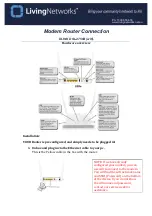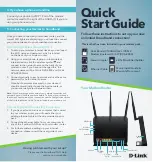
Disable Commands
87
disable ipx
network
<network_name>
Disables the specified IPX network. Use
list ipx networks
to see
which IPX networks are defined and their current status.
disable ipx
rip network
<network_name>
Disables the RIP routing protocol on the specified IPX network. This saves
system space by barring a large RIP database from growing, which is
useful for networks connecting over the WAN interface. Use the
enable
ipx rip network
command to restart RIP on this IPX network.
disable ipx
sap network
<network_name>
Disables the Service Advertising Protocol (SAP) on the specified network.
This saves system space by barring a large SAP database from growing,
which is useful for networks connecting over the WAN interface. Use the
enable ipx sap network
command to restart SAP on this IPX
network.
disable
modem_group
<name>
Disables the modem group you enabled with the
enable
modem_group
command. The default modem group,
all
, includes all
installed modems in the stack. Use the
show modem_group
command
to view INACTIVE status of disabled modem groups.
disable
network service
<service_name>
Disables a network service, such as Telnet or TFTP. If
close_active_connection
was specified as TRUE in the
add
network_service
command, all active connections are closed when
the service is disabled.
disable
security_option
remote_user_
administration
[dialin | telnet]
Disables CLI access by remote Telnet and dial-in users. All CLI
configuration must be done from the console port. You can use
enable
security_option remote_user administration
to re-enable
remote CLI access.
disable
security_option
snmp user_access
Disables SNMP access to the system. This prevents remote users from
using SNMP and damaging the configuration. You can use
enable
security_option snmp user_access
to re-enable full SNMP
access.
disable telnet
escape
Prevents various Telnet client services. Use the
show telnet
command to
view settings.
















































